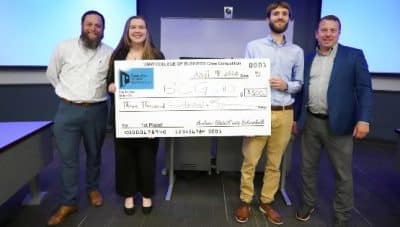
Dr. John Newton, AFBF director of market intelligence, met with the Virginia Farm Bureau FederationDairy Advisory Committee March 29 to discuss AFBF’s plans and to seek input on improving the 2018 Farm Bill.
Although dairy accounts for only 1 percent of total farm bill spending, improving the dairy Margin Protection Program is one of AFBF’s priorities. “The dairy safety net is broken, but we’re going to work to make MPP better,” Newton promised.
He said the program stemmed from recommendations by the dairy industry in 2010, and it subsequently became part of the 2014 Farm Bill. “But I haven’t met a dairy farmer yet who says they like the MPP.”
The MPP makes payments to dairy producers when their milk prices minus their feed costs fall below the margin coverage levels the farmers choose. The program is designed to address catastrophic conditions as well as prolonged periods of low margins. Margins are calculated monthly by the U.S. Department of Agriculture, and average feed costs are determined with a national calculation that reflects the cost of feeding dairy animals.
Last year, U.S. dairy farmers paid almost $100 million in premiums but received only $12 million in coverage. In Virginia in 2015, dairy farmers paid almost $1 million in premiums but received only $26,505 in payments.
“Many Virginia dairy farmers produce their own feed, and the recent droughts they’ve experienced added to their feed cost without ever being captured by the MPP margin calculation, which relies on national averages,” explained Tony Banks, a VFBF commodity marketing specialist.
“MPP doesn’t protect the full operating margin, only feed; so the coverage is very limited,” Banks continued. “Approximately half of Virginia dairy farmers are participating in MPP at the minimum catastrophic coverage level. Most would like to see a return to revenue protection coverage.”
AFBF is proposing a Dairy Revenue Protection insurance policy that would allow farmers to select the milk price mix used for their revenue protection. For example, a farmer delivering to a cheese plant could put more protection on the Class III cheese milk price, and a farmer shipping to a butter plant might choose to put more coverage on the Class IV butter-powder milk price. By allowing coverage to mix between milk classes, a farmer can better capture his farm-level milk price risk exposure, Newton explained.










